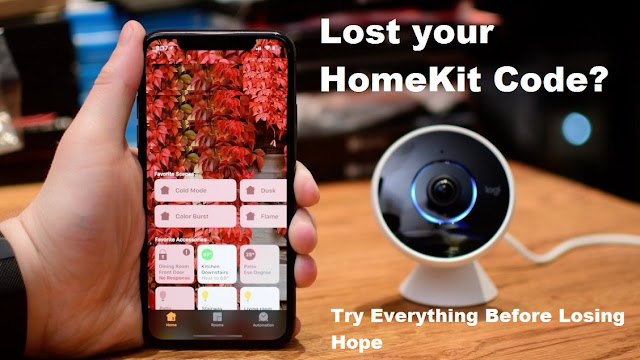Everybody’s well aware of the combination of smart appliances and a HomeKit. It is system software that enables you to control the home appliances with the Apple device’s help.
All the information provided by the HomeKit and the apparatus is essential for smart work. Thus, HomeKit needs to be paired with an eight-digit pairing code that comes along the smart appliances. Every accessory has its unique code, which is required while adding the device to the HomeKit app.
The big question is, what will happen if you lose the pairing code? In some cases, you may lose access to control the accessory via the Home app. While, in other cases, you may lose complete control. Hold on, and don’t panic! A lot of accessories come with an additional code as a backup number. Therefore, there’s still hope.
Make sure of what you’re looking for. HomeKit codes can have a different appearance on each device. Some codes are mentioned in a rectangular box on the device packaging. Other codes can additionally have a QR code that can be used to scan for pairing. Some of the codes have an eight-digit number and a wireless symbol that indicates that the accessory works with an NFC (pairing info is directly sent to your device).
Below is a guide on things to do when you lose the HomeKit code. If you want to learn more, read along.
Where to Look for the HomeKit Code?
As mentioned above, HomeKit codes are too important and so the company also provides backup codes. All you need to do is look for the same.
On-Device Labels
In most cases, the codes are mentioned directly on the device. These can be discovered mostly on the backside or under-cover of the accessory. Even if you don’t figure out the code at first, look closely at any label you find.
Packaging
Another place to find a label is the packaging of the device. Look for the code at the back of the accessory box, on the inner flaps, or below any removable plastic sheet or cover.
Pamphlets and Manuals
Most of the accessories come with a QR code used to scan and add the device to the HomeKit. It is the reason that no one pays attention to the pamphlets and manuals that come along. However, it is important to note that these manuals or pamphlets contain the backup codes for emergencies. It is advised to place the manuals at a safer place and not lose them in any case.
What are Alternative Pairing Methods?
A lot of smart accessories do not come with a HomeKit code at all. Thus, they are paired with a QR code’s help, using NFC, or the code is generated on the screen during the setup process.
On-Screen Codes
Many accessories display code on your device while setting up. These codes are either displayed on-screen while you start the setup, or in the settings menu. This method makes pairing easy and instant. Also, it is a better option than looking for codes to pair up the device.
Software Authentication
It is surprising, but some of the accessories generate in-app codes or use software authentication. It is an excellent way to keep a record of all your connected devices without losing anything.
Pairing via NFC
If you fail to find the HomeKit code on the accessory or its packaging, you can try other ways to connect a device using NFC to pair. It is a radio transmission of code by the accessory on your Home app that flashes the pairing information on the screen.
To check if your device uses NFC pairing, all you need to do is open the Home app and pair the desired device. As soon as the scanning screen appears, place your phone near the accessory. If your device supports NFC, the application will display further on-screen instructions.
Using QR Codes
The last method to reply upon is using the QR code. Look for a QR code on your device and scan the same for pairing. This is the simplest method out of all other methods.
What to do if all the Alternative Methods Fail to Work?
Many HomeKit accessories also work with Google Assistant and Alexa. This is the only ray of hope if you’re not finding the HomeKit code as it doesn’t require the Home app for pairing.
Use the Respective Application
HomeKit does have their respective applications that can be used other than the Home app. These apps can be downloaded from the App Store and enable you to control the accessories in the same way as the Home app does. However, the format of the settings may vary. These apps have additional settings that the Home app doesn’t offer.
Siri and Other Shortcuts
Check if your appliance supports Siri or not. You can check for the same on the packaging or the manual of the accessory. As Siri supports shortcuts that can be created using the Shortcut app, you can use the ‘Hey Siri’ format and give the command.
Now you might have understood the importance of HomeKit codes. Thus, it is essential to keep them protected. You can always take a picture of the code and save it in your gallery for later use. Other possible solutions are taking a note using the Notes app, or using third-party apps to save the QR codes.
SOURCE:- Lost your HomeKit Code? Try Everything Before Losing Hope

Comments
Post a Comment